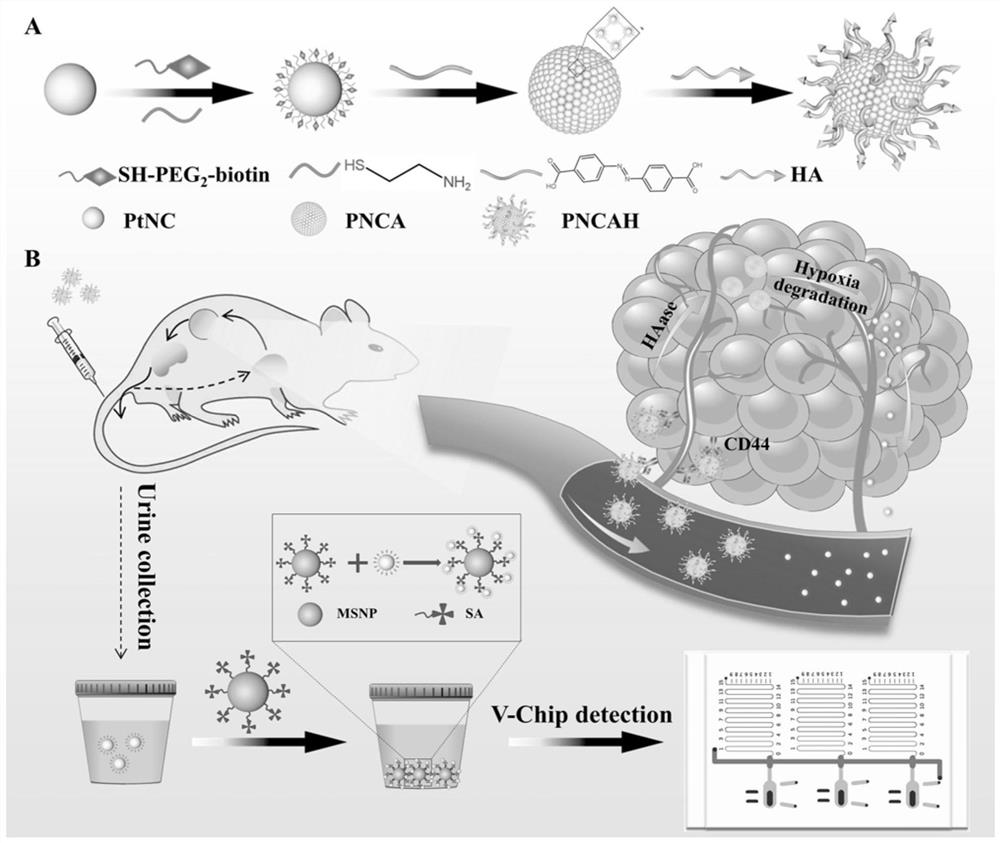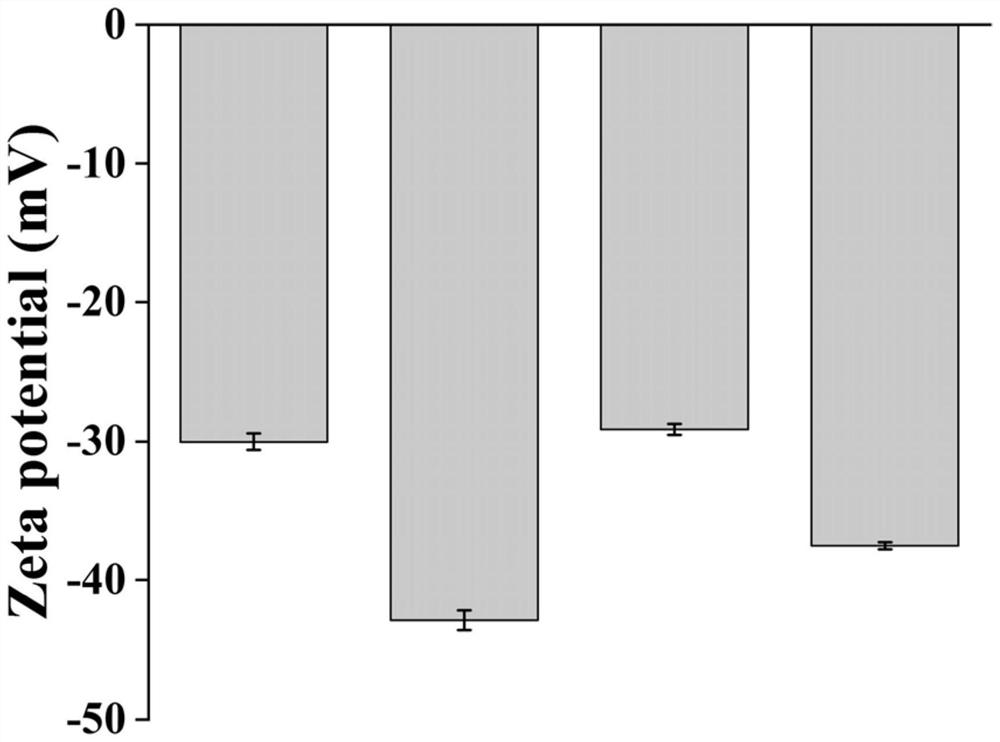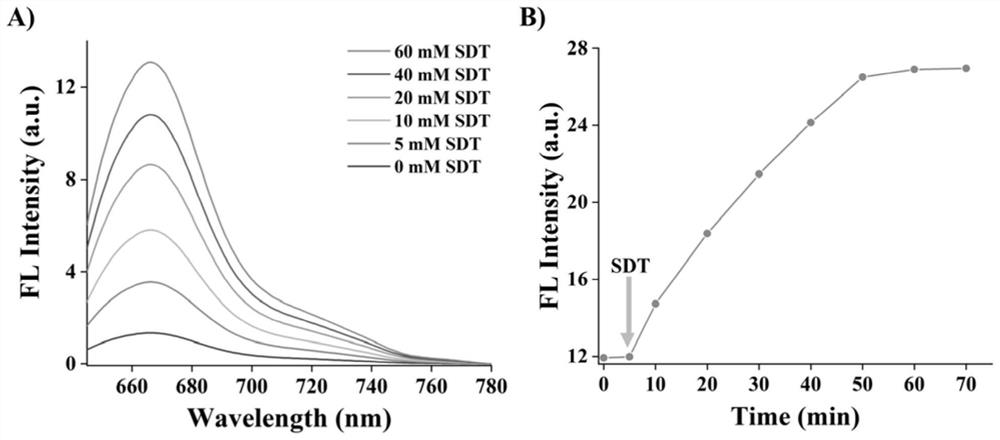Urine detection method of platinum super-nanoparticles based on hypoxia response and application of urine detection method
A detection method and ultra-nano technology, applied in the field of urine detection of platinum ultra-nanoparticles, can solve the problems of high price, low sensitivity and limited sensitivity of imaging technology.
- Summary
- Abstract
- Description
- Claims
- Application Information
AI Technical Summary
Problems solved by technology
Method used
Image
Examples
Embodiment 1
[0025] The present embodiment provides the preparation method of PNCAH nanoparticles:
[0026] PtNCs (0.01g) were treated with mercaptoethylamine (SH-NH 2 , 0.4mM) and mercaptoethanol (SH-OH, 0.6mM) for amination, the main function of mercaptoethanol is to prevent the aggregation of PtNCs, react for 3h. Then 0.002g azo was placed in 200 μL of dimethylsulfoxide (DMSO) with 0.038g N-ethyl-N'-(3-(dimethylamino)propyl)carbodiimide EDC and 0.0058g N- Hydroxysuccinimide NHS was used to activate the carboxyl group, reacted for 2 hours, and then added the activated azo solution to the aminated PtNCs under magnetic stirring. The solvent was 10mM PBS with pH 7.4, and the rotation speed was 480r. The mixture was washed 3 times with deionized water, and the collected PNCA nanoparticles were transferred to 5 mL deionized water. Then, hyaluronic acid (HA, 5 mg) was added to the PNCA solution, and reacted under 550 r magnetic stirring for 2 h, washed with centrifuged deionized water three ...
Embodiment 2
[0028] Hypoxic dissociation of PNCAH nanoparticles
[0029] This example verifies the hypoxia response of the system, the method is as follows:
[0030] First use Cy5 fluorescent dye to label PtNCs, then assemble the labeled PtNCs into PNCA nanoparticles, add hypoxia simulating agent SDT (20mM) to shake the reaction at room temperature, and measure the 670nm (Cy5 emission wavelength) every 10min. Fluorescence intensity, the result is as image 3 As shown in A, as time increases, the fluorescence intensity increases, which means that the PNCA nanoparticles dissociate; at the same time, as the concentration of SDT increases, the fluorescence intensity also increases, which also verifies the dissociation Leave( image 3 B).
Embodiment 3
[0032] Cytotoxicity of PNCAH
[0033] The cytotoxicity of the PNCAH nanoparticle of test embodiment 1, method is as follows:
[0034] Select triple-negative breast cancer cells (MDA-MB-231 cells), select different concentrations of PNCAH nanoparticles and incubate the cells, and find that the toxicity of nanoparticles to cells has no obvious toxicity below 10 μg / mL ( Figure 4 ). In order to reduce the toxic effect of PNCAH nanoparticles on cells, the concentration of PNCAH nanoparticles was controlled at 10 μg / mL in subsequent cell experiments.
PUM
 Login to View More
Login to View More Abstract
Description
Claims
Application Information
 Login to View More
Login to View More - R&D
- Intellectual Property
- Life Sciences
- Materials
- Tech Scout
- Unparalleled Data Quality
- Higher Quality Content
- 60% Fewer Hallucinations
Browse by: Latest US Patents, China's latest patents, Technical Efficacy Thesaurus, Application Domain, Technology Topic, Popular Technical Reports.
© 2025 PatSnap. All rights reserved.Legal|Privacy policy|Modern Slavery Act Transparency Statement|Sitemap|About US| Contact US: help@patsnap.com



